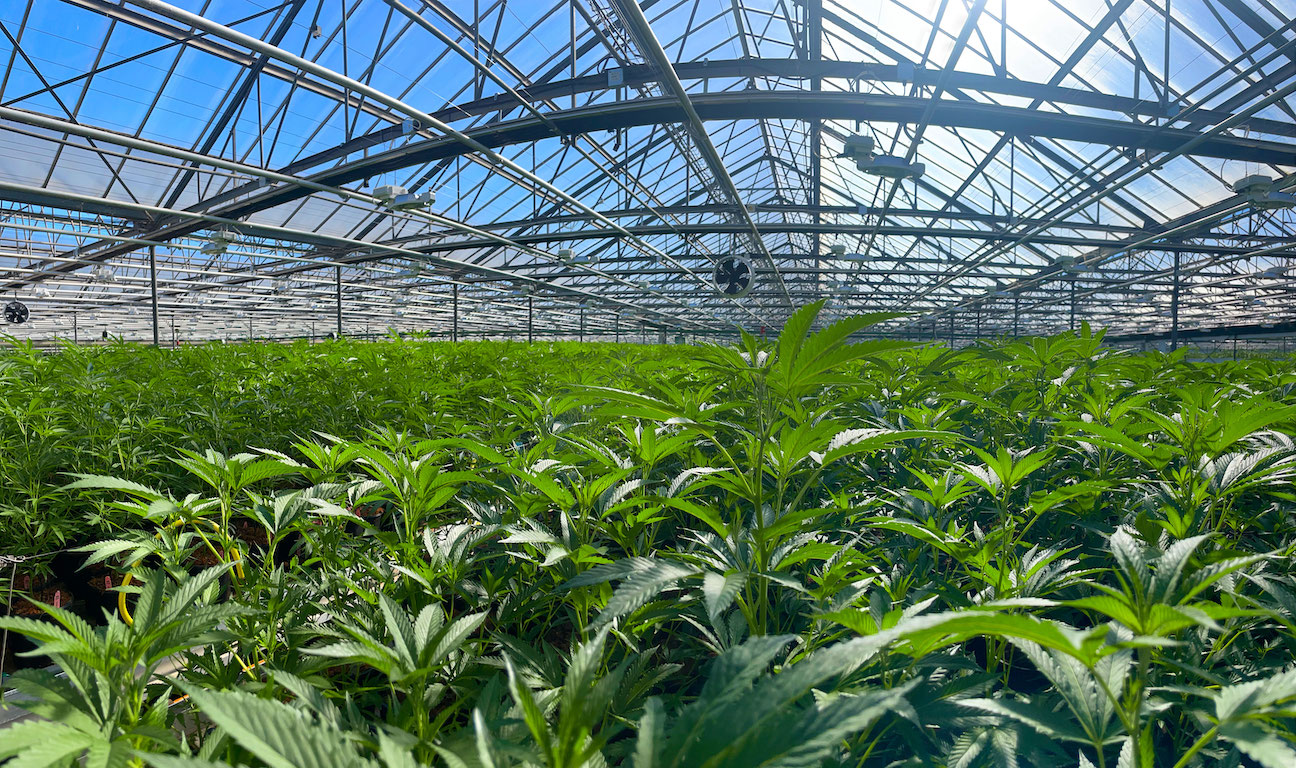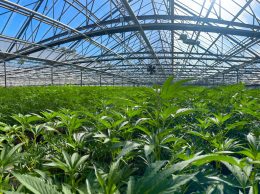Six years after legalization, cannabis black market still thriving
IN THIS ARTICLE
- Agribusiness Topic
- Jorge Mercado Author
By Jorge Mercado Thursday, September 15th, 2022

When California legalized cannabis for recreational use in 2016, the idea was to create a new legal industry and eliminate an illegal one.
Instead, the illicit market continues to have a stronghold in California, as legal growers struggle to turn a profit amid high taxes and strict regulations, and state and local governments often fail to enforce the rules against unpermitted and untaxed growers and sellers.
“I mean, you have to have some greater level of enforcement,” Skip Motsenbocker, CEO of Pacific Stone, a cannabis grower in Carpinteria, told the Business Times. “If there’s no enforcement or no penalty and if you’re continuing to just play under the old rules or no rules, how is it that the people who are trying to do it the right way can ever be really competitive in the end? I’d say it’s impossible from a practical perspective.”
Pacific Stone is one of the largest cannabis brands in the state. The company runs multiple greenhouses and sells under its own label in dispensaries statewide.
Mostenbocker estimates that the black market still accounts for about 80% of California’s cannabis industry.
Moorea Warren, a spokesperson for the California Department of Cannabis Control, told the Business Times that legalized cannabis is still in its infancy and “remains a work in progress.”
“But there are many early successes worth celebrating, including consumer access to regulated, tested and, therefore, safer cannabis products and the opportunity for legacy cannabis business to operate without fear of prosecution,” she said.
Part of the problem is a lack of enforcement. A recent Los Angeles Times article found that in East Los Angeles alone, there are 25 to 30 illegal retail dispensaries in operation. Even if police shut them down, they typically open back up within a couple of months. The Times estimated that there are at least 150 illegal dispensaries in all of Los Angeles.
“California needs to stamp out and investigate illegal dispensaries,” Amy Steinfeld, a managing partner at Brownstein Hyatt Farber Schreck who represents cannabis growers in Santa Barbara County, told the Business Times. “I know that’s a big problem in the Los Angeles region, where most consumers don’t know they’re walking into a legal or illegal shop. It’s frustrating for the legal growers because they go through so much to stay compliant.”
Illegal dispensaries aren’t as much of a problem along the Central Coast, but some growers have been caught operating without permits.
“The illicit market doesn’t have to follow those tax regulations or those compliance measures, so it makes it hard to effectively compete,” Motsenbocker said.
Many cannabis growers and retailers say the level of taxation in California is pushing business toward the black market, by making illegal cannabis so much cheaper than the legal stuff. While most retail products are only assessed the standard state sales tax of 7.25% — or slightly higher in some cities and counties — taxes on cannabis often add up to 30% or more. That includes the standard sales tax plus a 15% statewide excise tax at the retail level, along with local taxes in some areas.
Until this year, growers also paid a cultivation tax of around $10 per ounce of cannabis flower, a tax that other states with legal cannabis did not have. Gov. Gavin Newsom signed a bill in June that eliminated the cultivation tax and also shifted the excise tax from distributors to retailers.
The Department of Cannabis Control called the bill “the most significant reforms to California’s cannabis policies in years,” though so far there are no signs that it has slowed down the black market.
“The problem really has been that cannabis is treated so differently than any other crop. The multiple taxes have made it impossible to even run a legitimate business,” Steinfeld said. “But getting rid of cultivation tax will help growers. That is the base of the supply chain and that will be beneficial to our county.”
Santa Barbara County is home to more licensed cannabis growers than any other county in California. Ventura and San Luis Obispo counties have much smaller cannabis industries.
Pacific Stone has 1.2 million feet of canopy producing well in excess of 30,000 plants per week, Motesenbocker said.
But one of the other problems is that cannabis production is starting to outpace sales. There are over 7,500 active cultivation licenses in the state of California, and fewer than 1,000 active, regulated retail dispensaries. Since cannabis can’t legally be exported to other states, even those where it is legal, there is more product in California than can easily be sold by legal dispensaries.
“The disparity between those two is the supply isn’t matching the demand, because the demand is being so restricted, and that, in effect, is what’s causing a lot more of the illicit activity,” Motesenbocker said. “I spend a lot of time talking about enforcement, but you have to look at the other side as well. If there were stores active in all municipalities, how much more effective would the program be?”
California has raked in nearly $4 billion in tax revenue since the recreational market hit the stage in 2018, according to the Department of Tax and Fee Administration, but that tax revenue is flattening out.
For the first quarter of 2022, the state saw about $294 million in cannabis revenue tax, lower than the fourth quarter, when it was around $317 million. Either Californians are buying less cannabis, or they’re moving toward the black market.
If cannabis is ever federally legalized, something Steinfeld hopes can happen sooner rather than later, California is primed to become the biggest legal player in the country, she said. But there are still quite a few issues to work out before that can become a reality.











